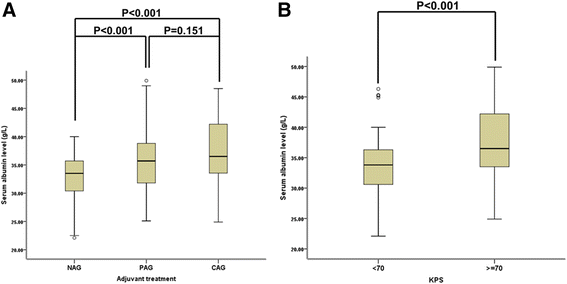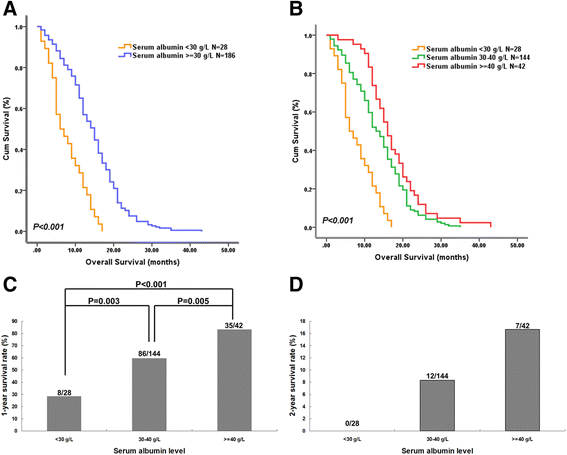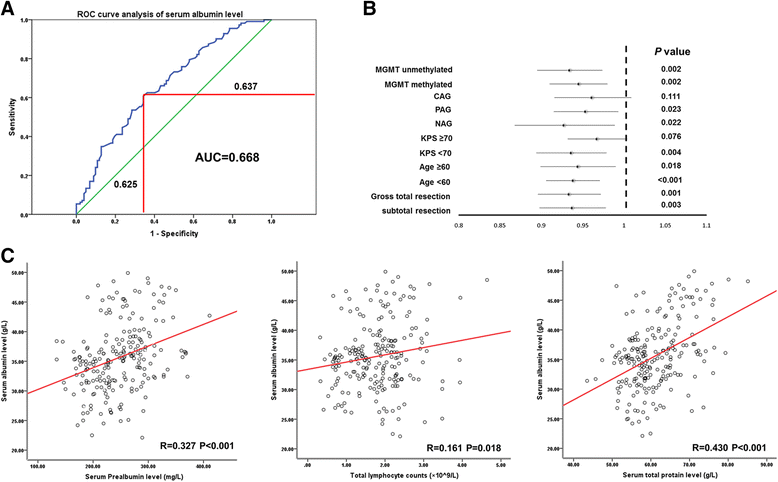The prognostic role of preoperative serum albumin levels in glioblastoma patients
- PMID: 25880463
- PMCID: PMC4355370
- DOI: 10.1186/s12885-015-1125-0
The prognostic role of preoperative serum albumin levels in glioblastoma patients
Abstract
Background: Serum albumin level is a reliable and convenient marker of the nutritional status of patients, and has been identified as a prognostic marker in glioblastoma. However, because of the recent wide application of standard radio-chemotherapy for the treatment of glioblastoma patients, the prognostic effect of preoperative serum albumin levels needs to be re-evaluated and the related mechanism should be further explored.
Methods: A total of 214 patients with histologically proven glioblastoma who underwent treatment at our institution between 2009 and 2012 were retrospectively analyzed. Clinical information was obtained from electronic medical records. Kaplan-Meier analysis and Cox proportional hazards models were used to examine the survival function of preoperative serum albumin levels in these glioblastoma patients.
Results: Serum albumin levels were significantly correlated with overall survival in glioblastoma patients (multivariate HR = 0.966; 95% CI, 0.938-0.995; P = 0.023). Serum albumin level was high in patients receiving standard therapy, which may affect its prognostic significance. Despite the correlation between serum albumin levels and other nutritional indicators such as prealbumin, total protein and total lymphocyte counts, only serum albumin level was an independent predictor of patient survival.
Conclusions: Serum albumin level is associated with prognosis in glioblastoma patients, although the underlying mechanism is complex because of the role of serum albumin as a nutritional indicator and its involvement in inflammatory responses.
Figures




References
Publication types
MeSH terms
Substances
LinkOut - more resources
Full Text Sources
Other Literature Sources
Research Materials

